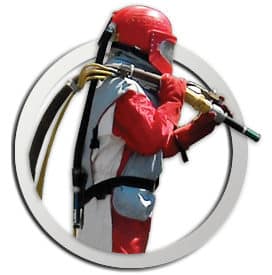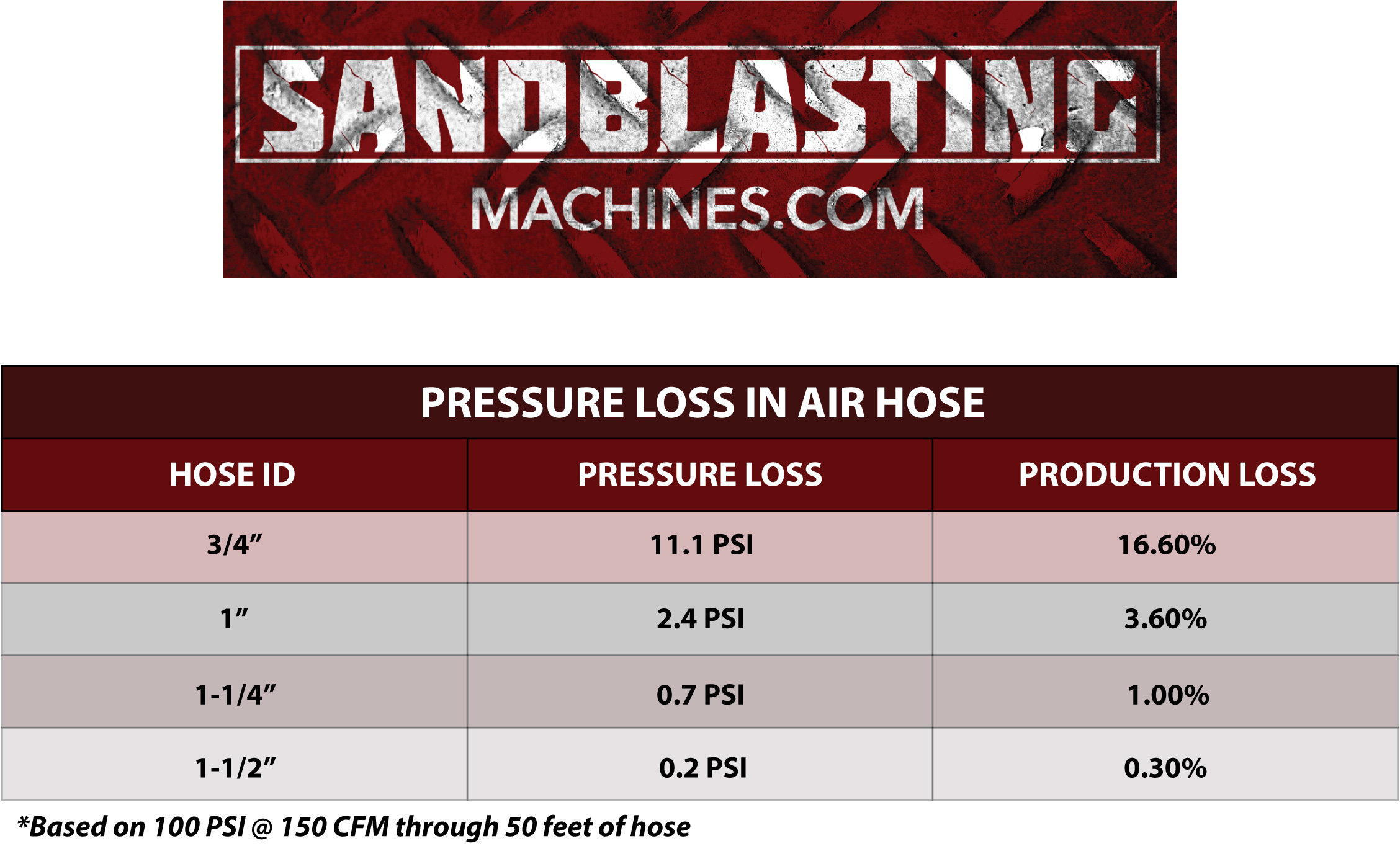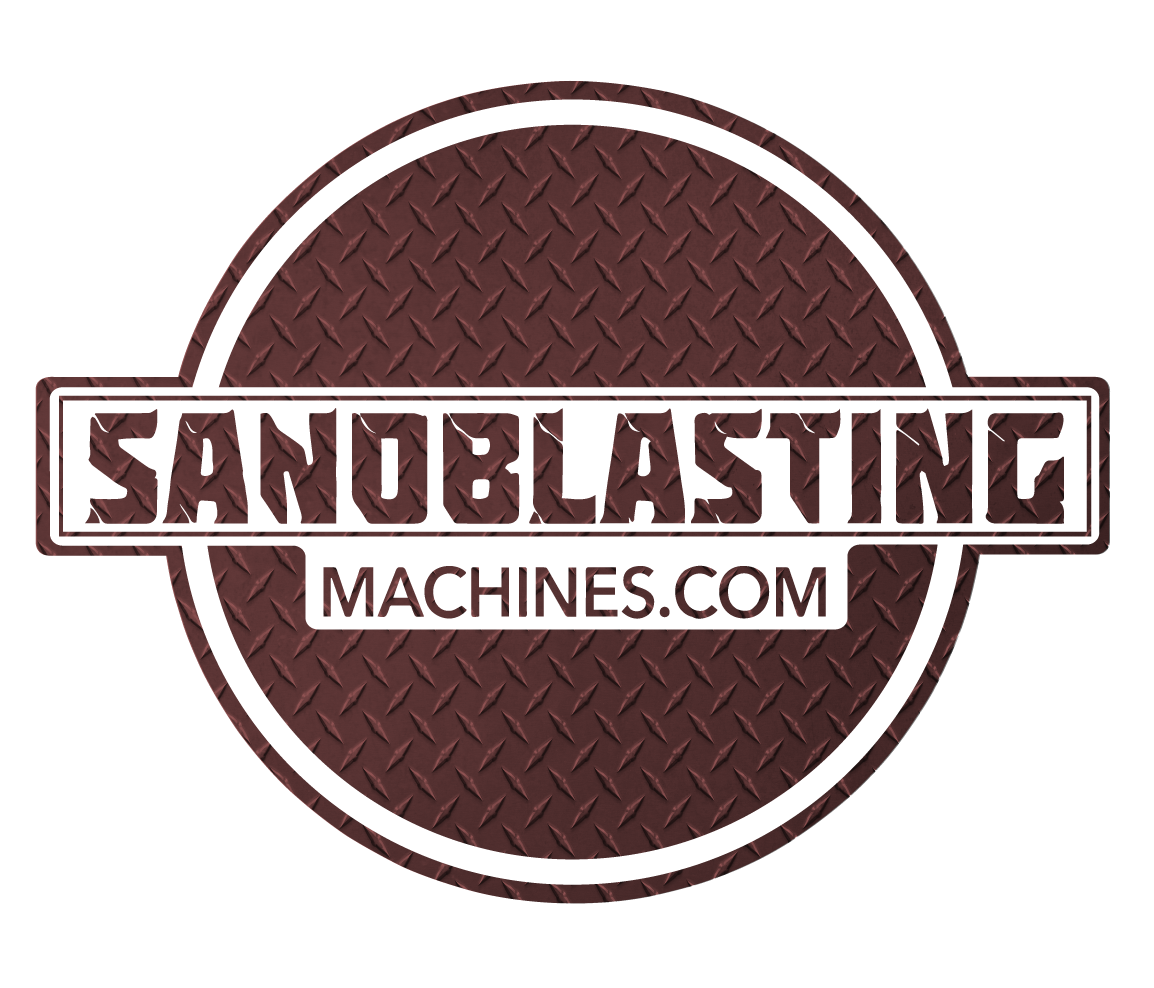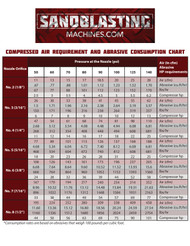What Size Air Hose Do I Need for My Blast Machine?
By on Nov 15th 2017

No matter how large or how small your blast machine setup, size matters. This is true for your compressor, nozzles, blast hose, and air hose. Buying a complete blast package eliminates a lot of the guesswork. However, you may have noticed that while we carry blast hoses and supplied-air respirator hoses, we don’t actually carry an air hose to hook up your blast machine and air compressor. Despite this, we can certainly help you in determining the appropriate size for your application.
First things first: we need to remember that a Clemco blast machine is a pneumatic tool and all pneumatic tools require compressed air.
Abrasive blasting requires High Pressure (PSI) and High Volume (CFM) when it comes to air—this will require a rather large air compressor. Choosing the correct compressor is crucial to your blasting operation because a machine will not function properly is there isn’t enough pressure or volume.
Check out our post on how to choose an appropriately-sized air compressor here.
The Machine does not actually dictate the CFM and PSI required to blast, but rather the nozzle at the end of the blast hose. The following chart provides the guidelines for the relationship between Clemco blast nozzles and air consumption:

Click here to view or print the full-size Compressed Air Requirement and Abrasive Consumption Chart
*Note: disproportionately-sized nozzles will result in an inefficient blasting.
Click Here for our Compressed Air Requirement & Abrasive Consumption Tool
The majority of operational problems in a sandblasting set-up are due to one of two things: either insufficient air or moist air.
A quick rule of thumb for determining how much volume your compressor is putting out is 1 HP = 4 CFM. High production blasting requires a minimum 80- 150 PSI and 80 – 450 CFM.
Once you’ve determined that your air compressor is properly sized for your operation, the next step is to hook it up. This is a critical because as we all know a chain is only as strong as its weakest link. If one component is faulty, the entire system will fail.
Maintaining Sufficient CFM & PSI
The nozzle orifice not only helps determine necessary compressor size, but it also help in determining a proper air hose. It is always recommended to use an air hose that is 1-1/2” ID or larger with unrestricted fittings. The air hose should, at minimum, be 3 times the diameter of the nozzle orifice. The reason a large air hose is recommended is to reduce pressure caused by friction. Your air pressure (PSI) will actually drop due to friction created within the more restrictive, smaller ID air hose. This will, in return, create a decrease in production by 1-1.5% with every PSI of pressure loss.

To maintain proper pressure and minimize pressure loss in the air hose, you should also keep the compressor as close to the pot as possible, minimizing the length of air hose needed and thereby reducing the need for bends and curves in the line. Pressure loss can be determined in the chart below:

Maintaining a Dry Set-Up
The second biggest issue with the supplied air to a sandblasting set-up is moisture.
Fact: hot compressed air traveling at high pressure through an air hose creates moisture. Every measure possible must be taken to remove that moisture before it reaches the blast pot: blast media and moisture do not mix and will cause blockages in your media valve. At minimum, there should be a manual drain air filter/ moisture separator installed before the inlet valve on your machine. In climates that are consistently humid, it is recommended that an air dryer or high volume coalescent air filter be installed in line before the blast pot.
To achieve and maintain a successful blasting operating, it is important to use appropriately-sized parts as necessitated by your individual machine and blasting requirements. Choosing the correct air hose is one of many important elements to productive and safe sandblasting. Other key components to keep in mind include (but are not limited to) the following:
- Air Compressor
- Large Diameter Air Hose
- Air Line Filter and or Dryers
- Nozzle Sized to maximize the capacity of the compressor
- High Nozzle Air Pressure
- Clemco Blast Machine (Capacity, Valves and Piping sized for high production)
If you have any questions in choosing the correct air hose, or any other component of your blast machine, call, chat or email one of our experts today.






